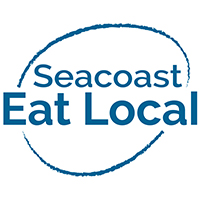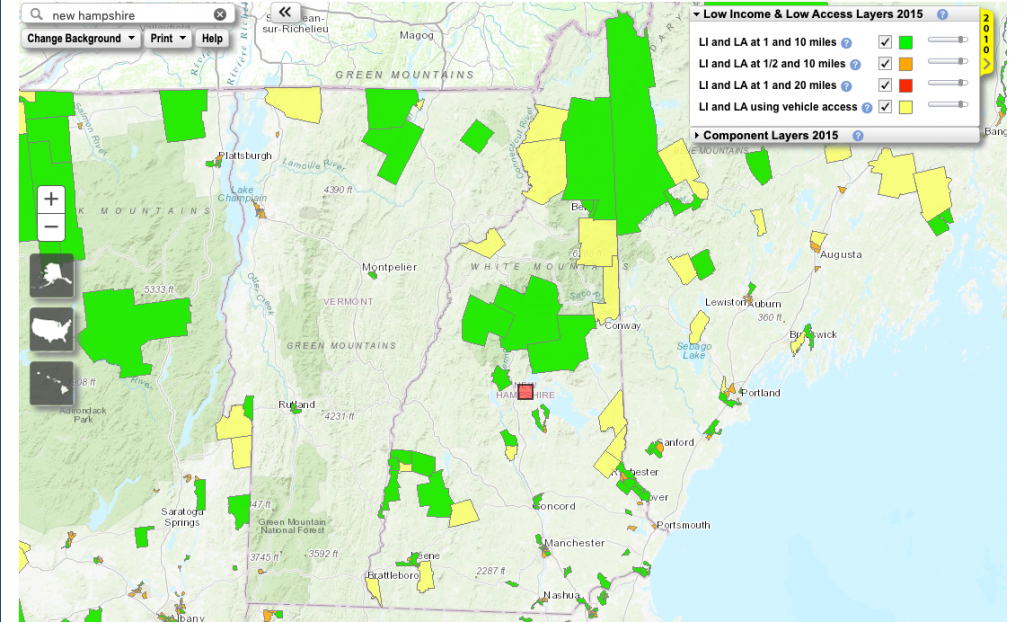Post written by UNH student and Seacoast Eat Local intern Meriah M.
Your local convenience store is probably familiar to you for the many times you’ve stopped for a cup of coffee, a pack of gum, or your favorite candy bar. You probably don’t find yourself shopping for groceries among the air fresheners and snack mixes. For one reason, these items cost more than they do at the local grocery store, and for another, in most instances, you can’t find the fruits, vegetables, meats, or dairy products that you need to prepare a balanced meal.
However, across the United States, there are many people for which these stores are some of the only options to regularly buy food. These areas are known as food deserts, which the USDA defines as areas where people have limited access to a variety of healthy and affordable food. Living in a food desert makes a person more likely to experience food insecurity, even when receiving food assistance because there are few places to use SNAP benefits (food stamps) where nutritious food is available.
New Hampshire’s food landscape is defined by the state’s rural communities and limited public transportation options, which creates a challenge for many low-income families looking to shop for healthy groceries. Using the USDA’s Economic Research Service Food Access Research Atlas, census tracts (a geographic region used for understanding the demographics of a portion of a county) that have low-income and low-access qualities can be identified (see picture).
Decoding the Food Access Map (pictured): Tracts highlighted in green, including parts of almost every county in New Hampshire, contain areas that are characterized by low-income and low-access, meaning that a significant number of residents are more than one mile from the nearest supermarket in urban settings or more than ten miles from the nearest supermarket in rural settings. Additionally, tracks highlighted in yellow show areas where lack of vehicle access poses a challenge to residents, with the regions having either more than 100 housing units do not have a vehicle and are more than ½ mile from the nearest supermarket, or a significant number or share of residents are more than 20 miles from the nearest supermarket.
There are many areas in New Hampshire where people have limited access to nutritious food, some areas are served exclusively by convenience stores, which do not stock fruit and vegetables to the extent that grocery stores do. A 2010 report from UNH’s Carsey School of Public Policy found a correlation in the state where areas that have lower food access also have higher rates of health conditions like diabetes and obesity, which are linked to diet. These adverse effects of lack of food access have prompted innovative ways to make healthy food available in underserved areas.
In Hawaii, a local organization has pioneered online shopping experiences that empower SNAP recipients to buy locally produced fruit, vegetable, meat, and dairy products online. A similar program supported by the USDA operates in New York, however, instead of local retailers, the food will be supplied by Amazon, ShopRite, and Walmart.
Right here in New Hampshire, Seacoast Eat Local is bringing food access to residents with the Seacoast Area Mobile Market (SAMM). The SAMM serves seacoast communities that have high concentrations of low-income or at-risk residents, are designated as being at higher risk for food insecurity, or have a reportedly high number of residents with lack of access to consistent means of transportation — targeting some of the green and yellow areas of the food access map. As with the stationary farmers’ markets, shoppers can use their SNAP benefits to purchase food at the SAMM and participate in the Granite State Market Match program, receiving a dollar for dollar match to double their purchasing power of fruits and vegetables.
In areas where food options are limited to convenience stores, the Seacoast Area Mobile Market serves as an important access point for nutritious foods that everyone should have as part of their diet, regardless of their geographic location or income level.
Follow the Seacoast Area Mobile Market on Instagram @SAMMVAN!

